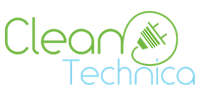 While cost (down) and capacity (up) have been the focus of much of the hype around Tesla’s newly launched Powerwall 2, the US company’s addition of an inverter to its second-generation battery units could also have major market implications.
While cost (down) and capacity (up) have been the focus of much of the hype around Tesla’s newly launched Powerwall 2, the US company’s addition of an inverter to its second-generation battery units could also have major market implications.
At least that is the view of Simon Hackett, seasoned cleantech investor and CEO of Australian energy storage company Redflow, which makes zinc-bromine flow batteries and whose newly launched ZCell competes with Tesla’s Powerwall in the residential battery storage space.
In a blog published on his website on Monday, Hackett argues that Tesla’s launch of the Powerwall 2 battery with a built-in AC inverter marks “a clear breakpoint” for manufacturers of home energy storage systems, by taking a leaf from the Appleplay-book of vertical integration.
“As with the Apple product ecosystem, this aims to establish Tesla as a single entry point for energy generation and storage systems in the home environment,” he writes. “Tesla has both the name and the resources to become a strong player in this realm.”
But Hackett believes that this “vertical stance” will take Tesla in the opposite direction to most of the rest of the industry, which has tended to more of a “horizontal” orientation: “a commercial ecosystem that offers choice at all layers of the energy storage system, using standardised interfaces to allow mix-and-match assembly of devices in the solution ‘stack’.”
The move also puts the company into direct opposition to its former allies, says Hackett – both existing inverter/charger vendors, that may be cut out of the Tesla solution set, and experienced energy system installers.
“The Powerwall 2 unveiling is an interesting day for inverter/charger vendors such as Solar Edge, manufacturer of the inverter of choice for the original Powerwall, which is no longer required with Powerwall 2.





